Over the course of 16 months in Minneapolis, geographer and social practice artist Valentine Cadieux and Marina Zurkow, with a group of collaborators and participants, explored what it might mean to “make the best of it” (“it” being climate change), using dandelions to think through eating differently, nimbly, with sadness, resilience and even joy. Our project was bookended by two major public art festivals—Northern Spark 2016 and 2017. In between these festivals Cadieux and Zurkow hosted a series of potluck dinners, meet-ups and educational initiatives at Hamline College and the University of Minnesota, as well as in public parks, homes, and community kitchens.
For our project in Minnesota, home to Big Ag, Making the Best of It: Dandelion (MTBoI:D) teamed with a corps of committed community artists, farmers, biologists and activists to designate the dandelion as its northern U.S. poster child. Abundant, nutritious, beloved by children, symbolic of seed dispersal, and disliked by lawn-owners, this invasive plant offers a model of eating and thinking about human and interspecies well-being on a variety of levels. It is highly adaptable, does well in disturbed ecosystems, and is of significant use to a variety of species, from bees (an early pollinator) to our gut microbiome (an excellent digestive aid). In addition, the species’ response to challenging environmental conditions makes it a relevant guide for exploring the complexity of climate instability.
For Northern Spark 2016, MtBoI:D created a refuge-like outdoor installation of triangular buildings, each of which addressed human/dandelion relations at a different scale, from the human microbiome, to the local macrobiome, to the headier paradigm shift of considering dandelions as nimble exemplars of thriving in a wide variety of conditions. MtBoI:D offered free servings of dandelion, in food, beverage, and medicinal forms, accompanied by a system of information and provocations.

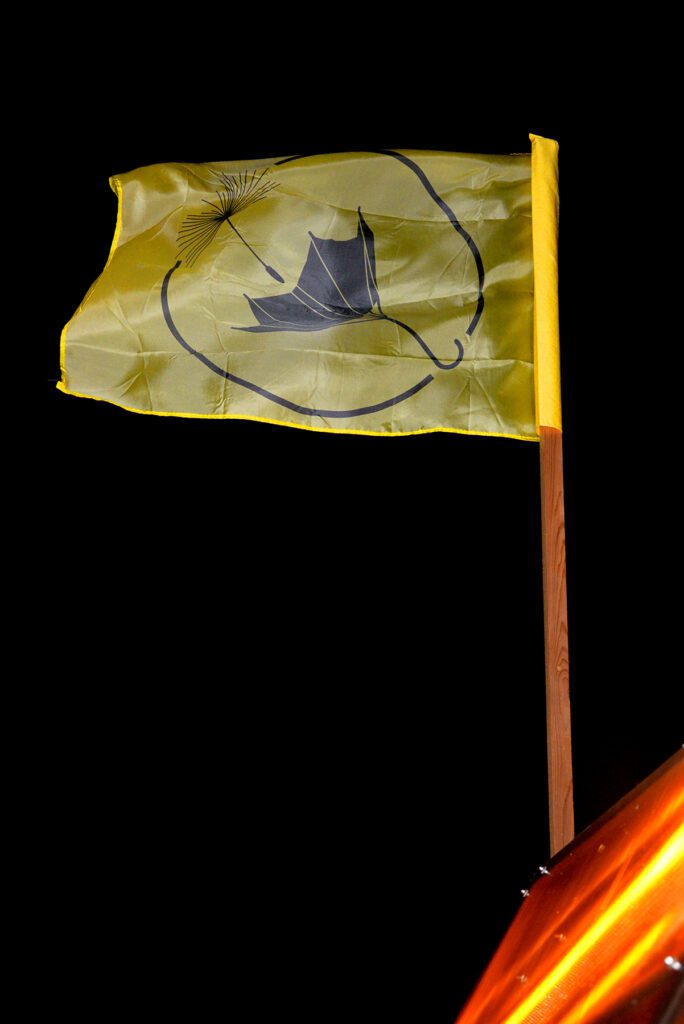

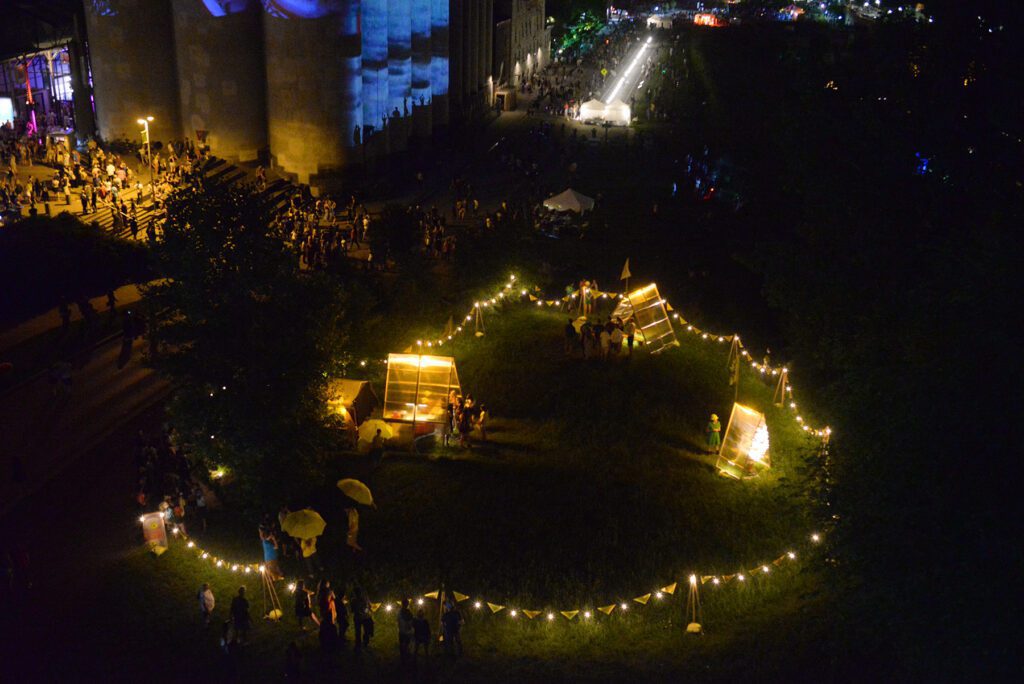
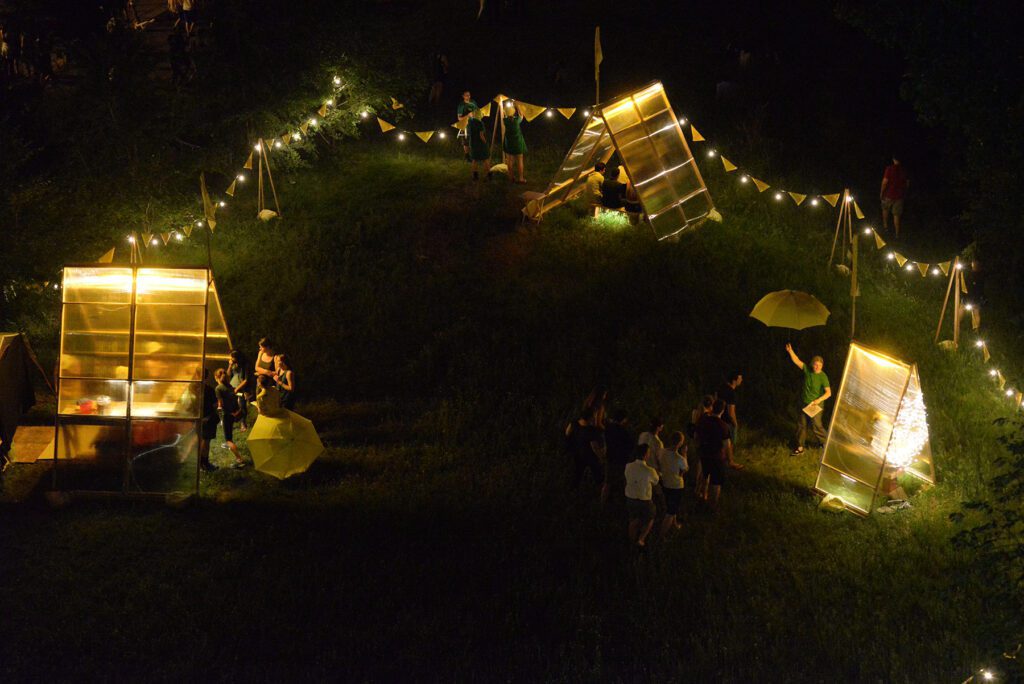
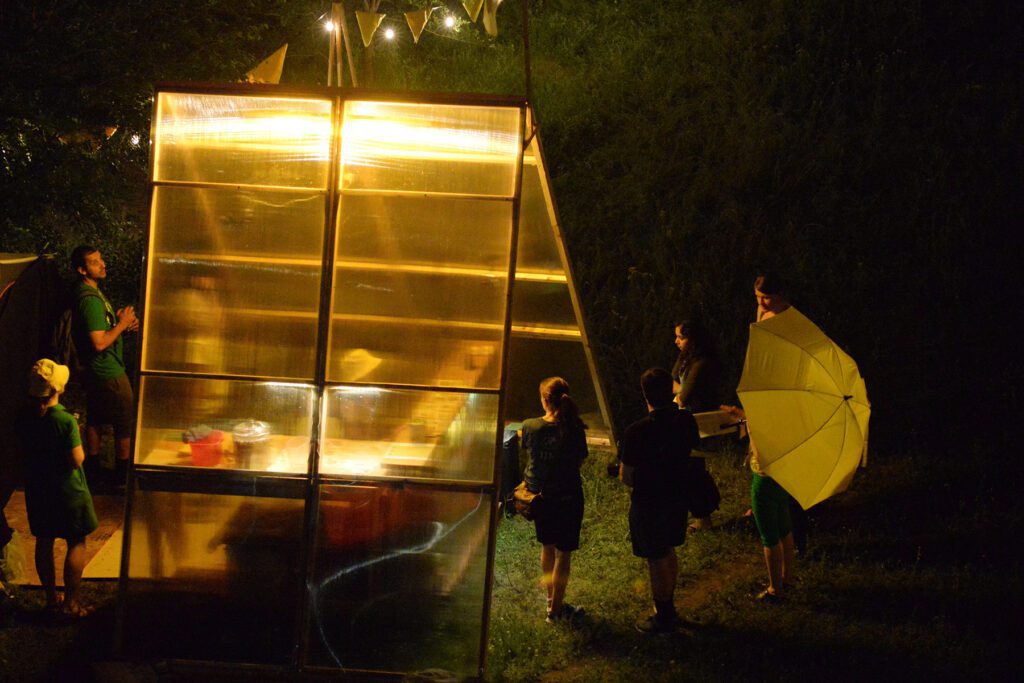
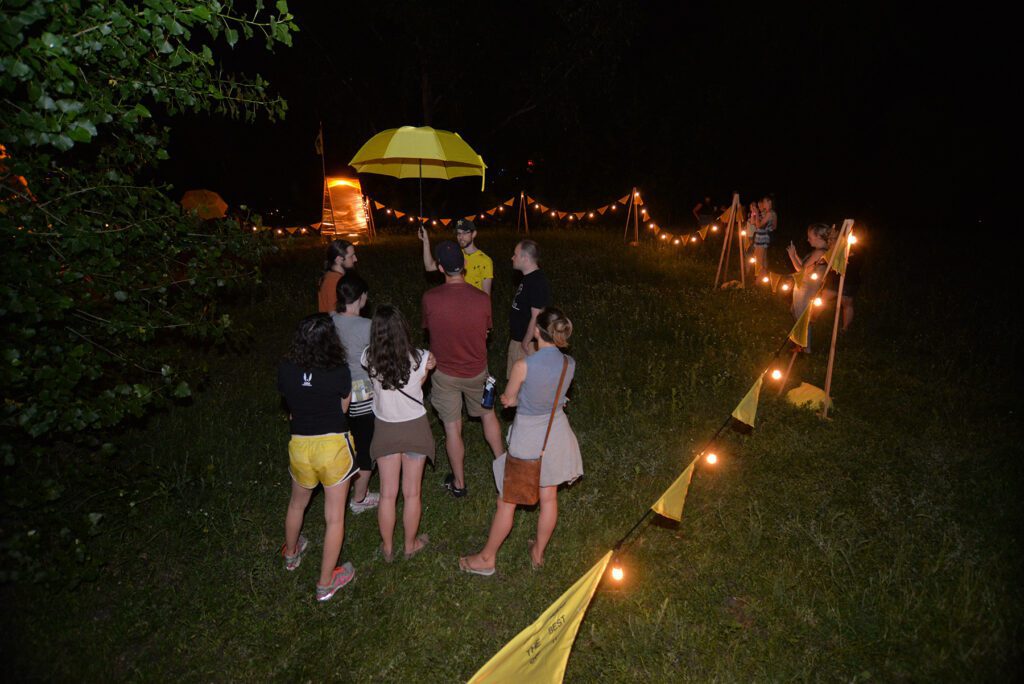
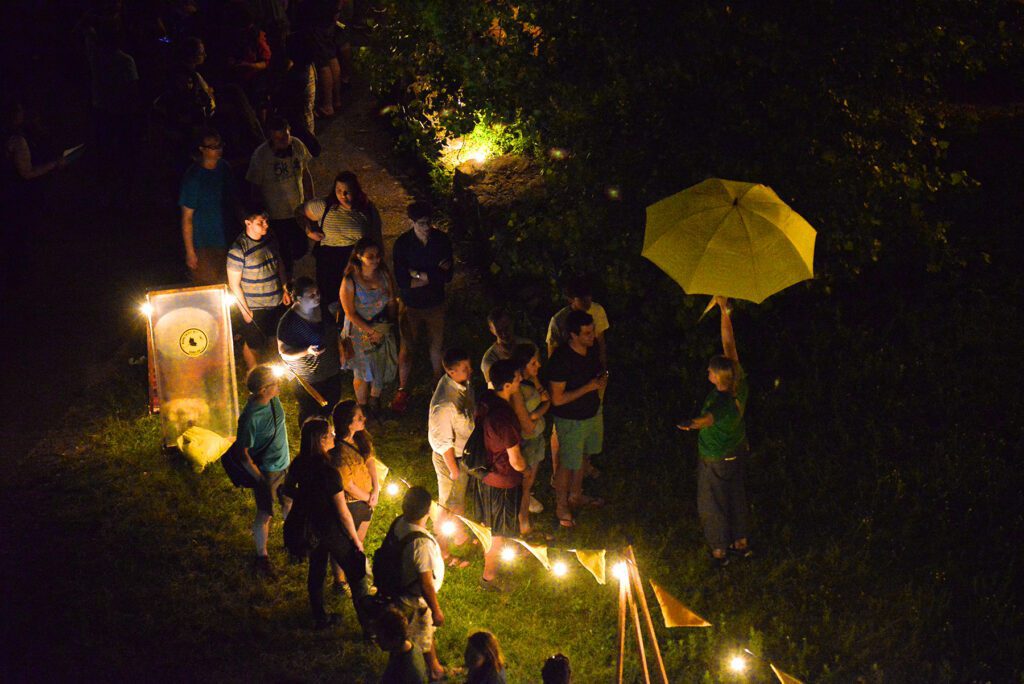



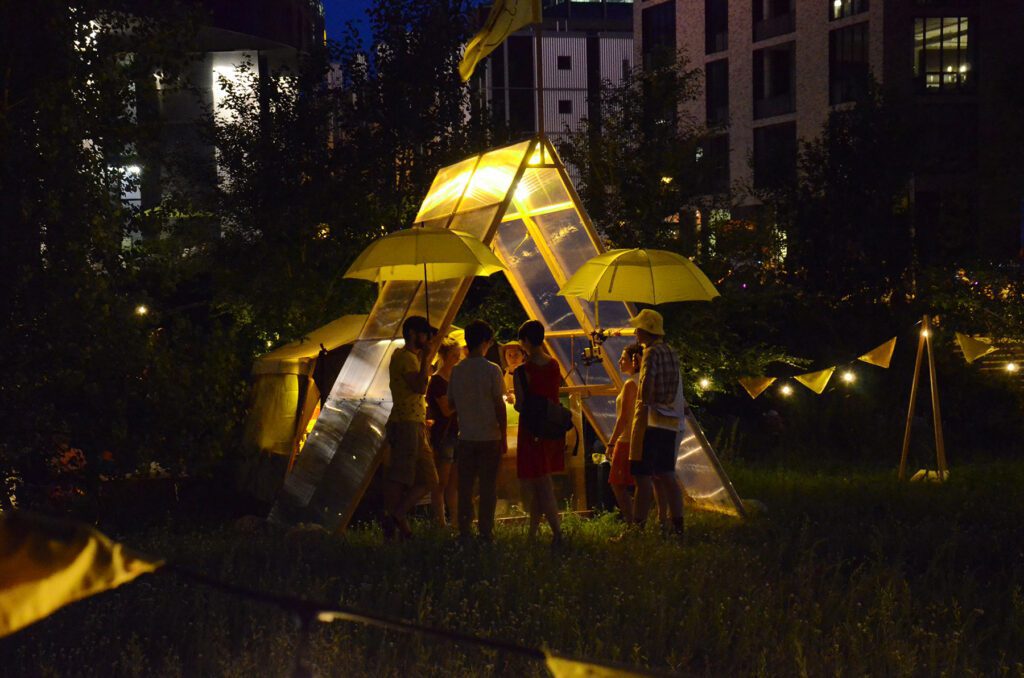
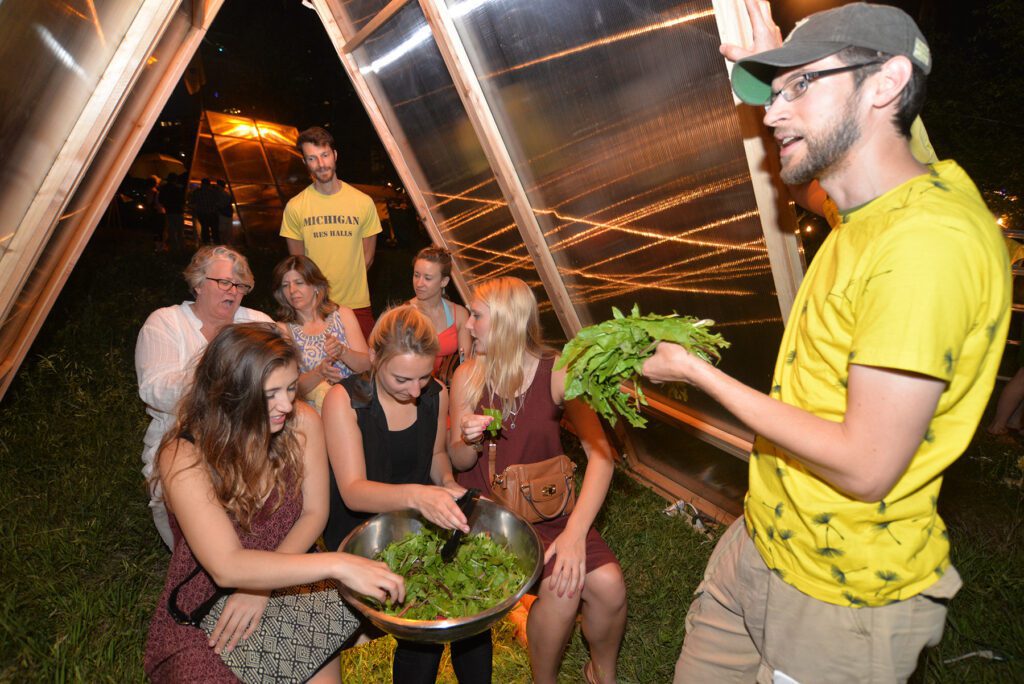

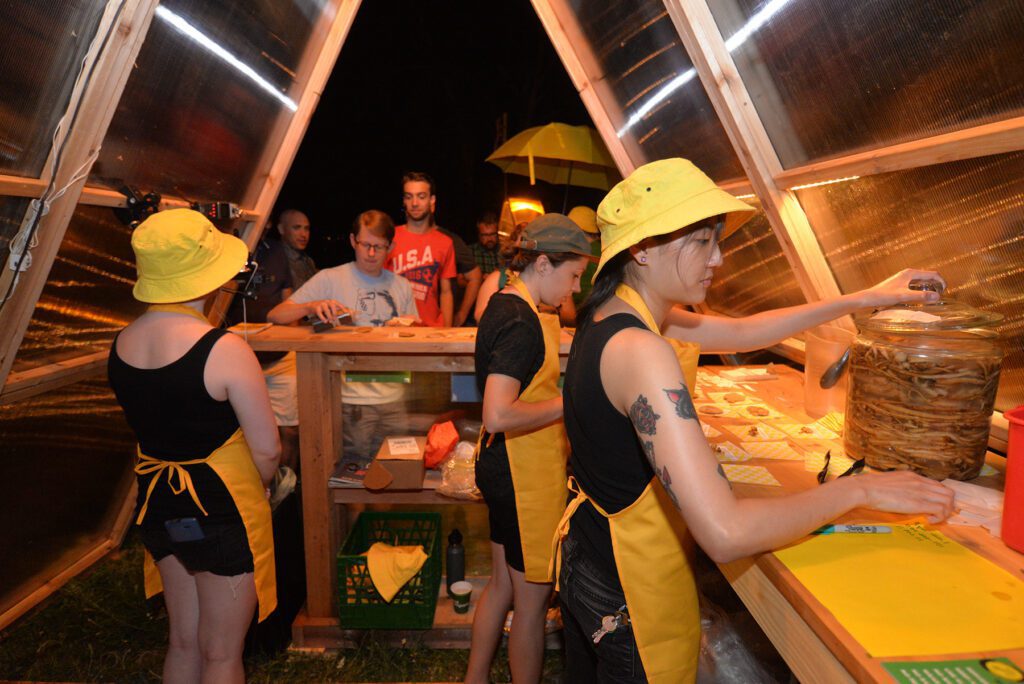


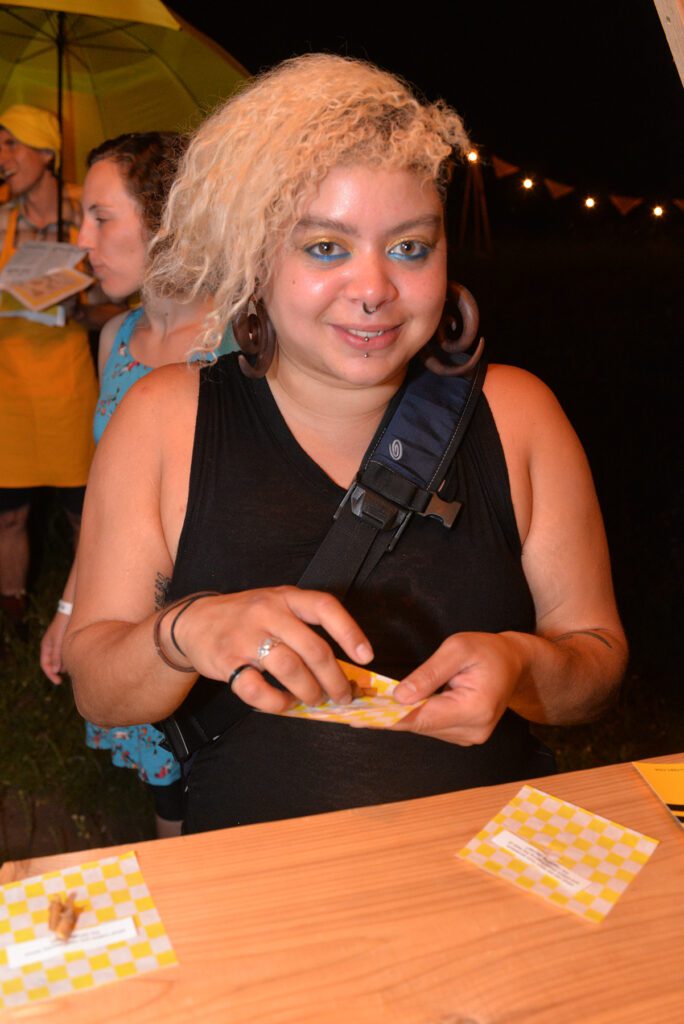
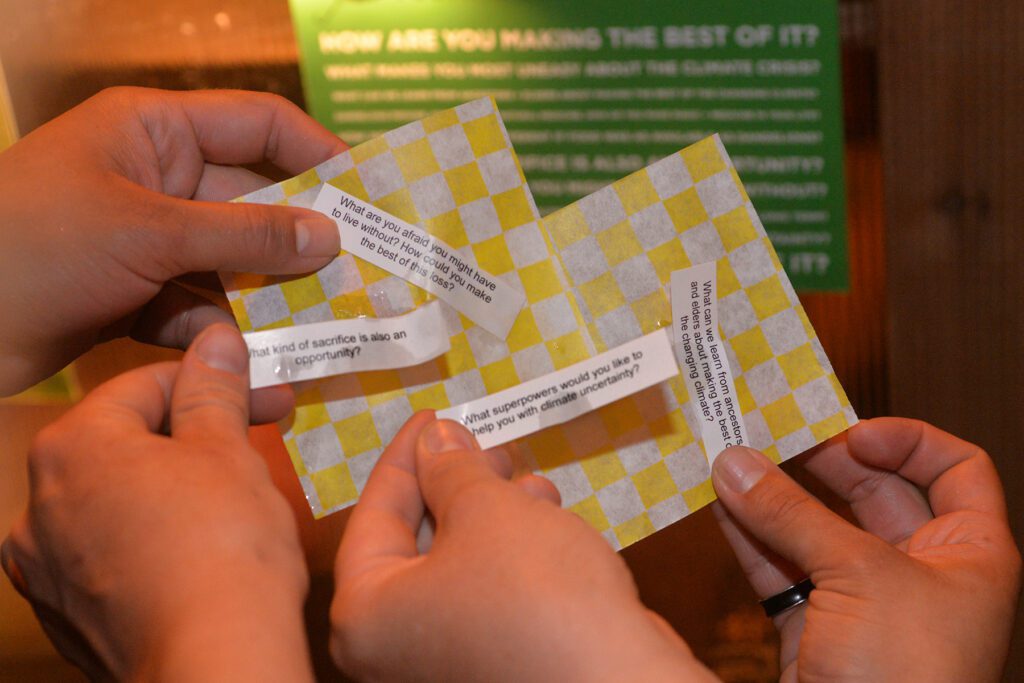


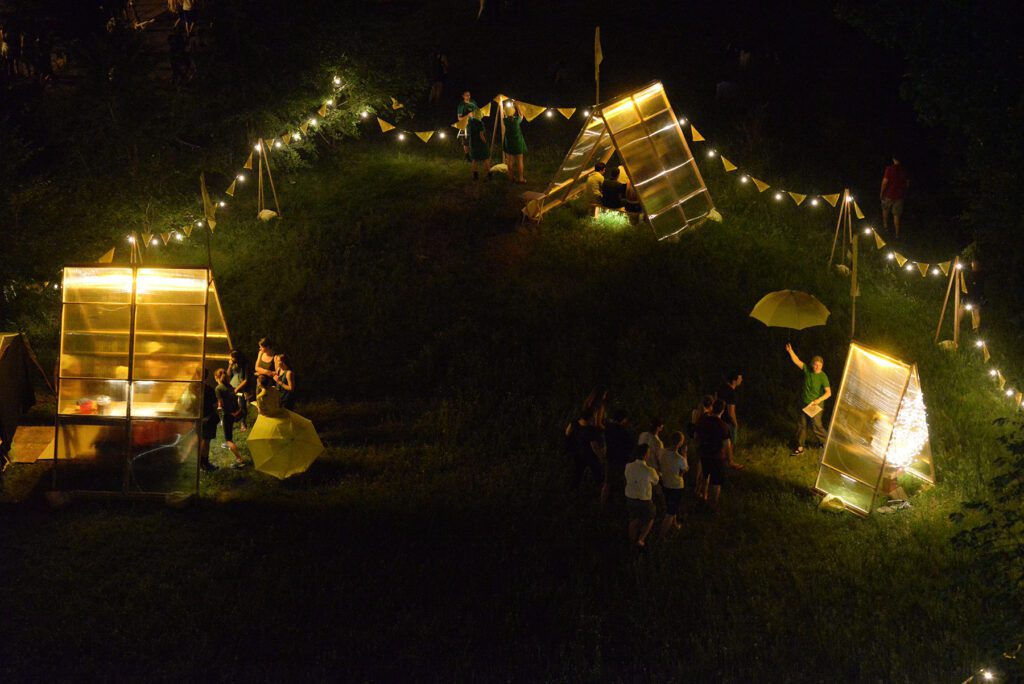
More about the project:
Over 20,000 people attended Northern Spark this year. The theme of the festival was “Climate Chaos/Climate Rising.” How do you make serious work in a relatively circus-like atmosphere? How do you make joyful work about such a serious subject?
We chose a beautiful unmowed park site, under the ruins of the Gold Medal Flour Mill, icon of “big ag” in the Midwest, and at the edge of the last lock along the Mississippi River. In mid-June, it was filled with weedy wildflowers — including some dandelions. In order to create a sense of calm in the maelstrom of events and installations, and because we wanted to provide a sequenced experience (15-30 minutes) for participants, we created a loose boundary around the space, allowing for people to observe from outside or to wait to participate.
Tours of 6-8 people at a time were invited in. We had up to 4 “guides” working simultaneously. Guides are identified by their yellow umbrellas. These were local experts with different backgrounds: biologists, artists, farmers, and food activists. They were invited to lead in their own way, providing an improvisatory space developed in rehearsals.
While people waited to come in, an Orator read excerpts from a wide range of books and pamphlets, in the manner of an old-time newspaper hawker. The readings ranged from children’s poems about dandelions, to MN park rules on foraging.
The site consisted of three “nodes” or small structures:
– a Microbiome node (right),
– a Macrobiome node (top), and
– a Refuge (left)
Each node had a particular theme, related to dandelions, health and climate change.
The first stop n the tour was the Microbiome node. This node addressed human being inner ecologies – the beneficial micro-flora (bacteria) that live in our guts. In the microbiome node, a “Gut Fairy” dispenses dandelion root tincture to feed your inner ecology. Dandelion roots contain high amounts of inulin, a polysaccharide that feeds these micro-flora. It is often taken in a tincture or a tea.
The next stop was the Macrobiome node. Participants were invited to sit down and talk with the guide about the Mississippi River, hydro-power, grain mills, infrastructure, and the limits of monocultural farm production. Washed raw dandelion leaves were sampled – much as they’d be used in salads or as cooked greens. They are very bitter. Guides were invited to talk about bitterness and denial, in the face of climate changes that are altering the growing season, and jeopardizing the food system we have grown to ignore.
The last stop was the Refuge node. This structure functioned as a snack bar, conversation and interview space. In the Refuge node, a dandelion-expert team were in charge of prepping climate change fortune cookie questions, snacks, and running documentation. We worked with local chefs and fermenters to make dandelion snacks. The dandelions – flowers, roots and leaves were harvested from neighboring urban farms and gardens by the core group. Snacks included dandelion flower power bards, dandelion kimchee pancakes, and dandelion root pickle. Master fermenter Jim Bovino made a large amount of pickles.
Each snack came with a question, in the form of a fortune cookie slip. There were several “fortune cookie” questions: How are you making the best of it? What kind of sacrifice is also an opportunity? What foods and resources engage and sustain you over the long term? How would your life be different if food was as available as dandelions? What superpowers would you like to help you with climate uncertainty? What are you afraid you might have to live without? What makes you most uneasy about the climate crisis? Conversations continued after the guided experience was complete.
The Making the Best of It: Dandelion team was a corps of about 15 guides, orators, documenters and food servers; they were offered a modest fee for their time. In preparation for the event, we had several meals, meetings and brief rehearsals. The corps was free to improvise along a set structure of events, and we asked guides and severs to “hit” some key points, but were otherwise free to bring their own experiences to the project.
About Making the Best of It:
Making the Best of It is the umbrella concept for a series of regional site-specific pop-up food shacks, installations, carts, tea houses, delivery drones, and designed community dinners that feature edible climate-change enabled, and often not normally eaten, indicator species as part of the menu. These events are designed to engage the public in tastings and conversation about the risks of climate chaos, our business-as-usual food system, and short-term food innovations at our disposal.
Additional Credits:
Food materials, chefs: Jim Bovino, Director of Fermentation at GYST Fermentation Bar, Courtney Tchida, Kim Bartmann and Anne Saxton of Barbette and other enterprises, Kristi Varner at Gigi’s Cafe and Squeaky Willow Farm, Jerry Fodness and staff at Gigi’s Cafe, Jourdan Morris at Mill Valley Kitchen, and to dandelion providers:Courtney Tchida at Cornercopia Student Organic Farm at the University of MN and Emily Paul at The Good Acre
Guides: Matt Frank, Elise Hanson, Rachel Mazac, Sarah Nassif, Ryan Seibold, and Monica Sheets
Orators: Stephen Carpenter , Randall Cohn , Colin DeYoung, Shanai Matteson, Aaron McKain, Johanna Nassif, Jim Bovino
Gut Fairies: Sarah Petersen, Eden Rome
Servers:Jeni Larson, Sassi Libertus, Korynn Newville, Angela Sauro, Emilia Skogen
Perimeter Guard: Merry Snyder
Set up: Alice Blesi
Clothing generously provided and printed by PRINT ALL OVER ME
Fortune cookie slips generously provided by K.C. Fortune Cookie Factory
Special thanks to Eden Rome
Supported in part by the University of Minnesota School of Architecture BDA program. A huge thanks to Gayla Lindt, director of the BDA, and the students who helped with the project – Rosemarie Gregoire, Emmett Houlihan, Jennifer Larson, Korynn Newville, Emma Norden, Natalia Piela, Angela Sauro and Hayley Selinski.